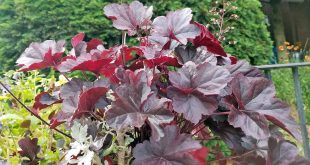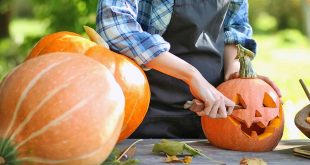Broccoli belongs to the Brassicas plant family. This vegetable grows best in the cool season and in spring and autumn two plants can be grown in your garden. Broccoli and other Brassica vegetables do not normally tolerate high heat and moisture.
The head from the middle of the broccoli plant is what you know best. The broccoli leaves can also be eaten and used like kale or cabbage green.
What are brassicas?
Broccoli belongs to the family of mustard plants known as Brassicaceae. Brassicas are also known as cruciferous vegetables or cole crops. This plant family also includes arugula, Brussels sprouts, bitter cress, kale, bok choy, cabbage, cauliflower, cabbage, rutabaga, turnip, horseradish, radishes, watercress and others. Most varieties of Brassicas grow best in cold weather. That is why they are among the first plants to be planted in the vegetable garden in spring, and many gardeners plant them again in late summer for an autumn harvest. Brassicas don’t like fluctuating temperatures or high heat – after a few seasons, you’ll find that broccoli, cauliflower, and Brussels sprouts work best when the springs and summers are cooler than average.
Mom was right – eat your vegetables
Brassicas are a fantastic diet choice because these vegetables contain an abundance of phytonutrients. According to research by the National Institutes of Health“Brassicas”Prevent oxidative stress, induce detoxification enzymes, stimulate the immune system, reduce cancer risk, inhibit malignant transformation and carcinogenic mutations, and reduce cancer cell proliferation.“This is quite a nutritional benefit. If this family of vegetables is not regularly included in your diet, you are missing out on significant health benefits.
Brassicas are full of vitamins C and E, carotenoids and antioxidant enzymes such as catalase and contain polyphenols and organosulfur compounds with antimutagenic effects (reduction of the mutation in cells). They are also thought to inhibit DNA methylation and cancer development.
Broccoli varieties
There are four types of broccoli: heading (most common), romanesco, germination and raab.
Heading kind of broccoli
The broccoli heading forms a large central head (this is the type most commonly used on food shelves). Ripe heads are 3 to 8 inches in diameter depending on the variety. After the central head is cut on spring-planted broccoli, smaller heads develop on the plant that can also be eaten.
Romanesco broccoli
Romanesco broccoli produces dramatic, spiral heads.
Sprouting broccoli
Sprouting broccoli, also known as Italian broccoli, forms many florets or small heads, but this type does not produce a firm head.
Broccoli Raab
Broccoli raab, also known as beet broccoli, is actually not broccoli – it is a kind of beet.
Prepare garden soil for broccoli
Broccoli needs fertile soil with a pH between 6.0 and 7.0. As with other brassicas, broccoli depends mainly on potassium and phosphorus for its growth. Most soils in North America contain these elements in sufficient quantities that fertilizer only needs to be added if a soil test indicates a need for potassium or phosphorus. However, it is highly recommended that you put compost or composted manure in the garden soil before planting to increase fertility, build up organic matter and improve drainage. If you grow broccoli on sandy soil, irrigation is important for optimal plant growth and the development of head and side shoots.
Do not plant broccoli for two years in a row in the same garden bed or in the same bed in which brassicas were planted in the previous year. Broccoli and all brassicas are exposed to the same nutrient deficiencies, diseases and pests. Therefore, practice crop rotation to avoid this Flea beetle, imported cabbage worm, cabbage grinder, diamond back moth, Cabbage grubs, black leg, club root, black rot and Alternaria leaf spot.
When to plant broccoli
Timing and temperature are crucial for a successful broccoli. Therefore, pay attention to the weather when planting and growing. The rule of thumb for an autumn harvest is: planting too early is better than being late. Brassicas actually sweeten when exposed to cold temperatures and light frost. However, if you plant too late in summer and fall comes early, you may not have heads at all. In spring, early planting of seedlings can lead to “buttoning” – the heads become very small when exposed to a series of consecutive nights below 50 ° F. For best results, always choose a variety that suits your climate.
The ideal air temperature for growing broccoli is between 65 and 80 ° F. Plant broccoli seedlings in the spring after the risk of frost has passed and soil temperatures have reached 50 ° F. Broccoli and brassicas generally don’t like high heat or fluctuating temperatures. When the plants are young, very warm or hot periods, accompanied by insufficient moisture, can cause the heads to become deformed, pale or uneven. If you have a very hot spring, you can get heads that don’t form or that are very small and bitter.
Broccoli seeds can be started indoors over the winter and seedlings can be planted 4-6 weeks before your last frost. The seeds can be replanted for an autumn harvest in late July. In spring, broccoli and raab broccoli seeds can be sown in the garden. However, it is generally not recommended to use seed-broccoli in your garden in the spring as there is not enough time for the heads to develop before the summer heat arrives and the spring soil is usually too cold for broccoli seeds to germinate can.
Choose a place with full sun. Plant broccoli seedlings or seeds about 10 inches apart since the mature plants will take up a lot of space for proper head development. If they are planted too close together, the heads will be very small.
Fertilize broccoli
Use a slow-release, low nitrogen organic fertilizer. Adding too much nitrogen to young plants can result in hollow stems. Work the fertilizer carefully underground to avoid the loss of nitrogen to the air, being careful not to disturb the flat roots. Add 2 inches of compost around seedlings after planting to provide organic material and food. Brush the plants with an additional 2 inches of compost on the side one month after planting the seedlings.
Pour broccoli
Broccoli needs a lot of water for the development of plants and heads. Therefore, provide 1 to 1.5 inches per week when there is no rainfall. If water is withdrawn from them, the heads may not form properly and taste bitter (they are definitely still edible, but do not have the sweetness that is ideal).
When to harvest broccoli
Depending on the variety, the broccoli grown from seeds is ready to harvest in 100 to 150 days, and the grafts are ready to harvest in 55 to 80 days. It’s time to harvest broccoli when the middle crown is full of tiny, green, tightly packed buds. If the tiny buds of the head swell or turn yellow, harvest it immediately, regardless of size, because it will bloom and taste floury if it stays in the ground longer.
Harvest the broccoli head from the stem and leave the rest of the plant in the ground. New side shoots are formed that look like small broccoli heads and can be harvested if necessary.



